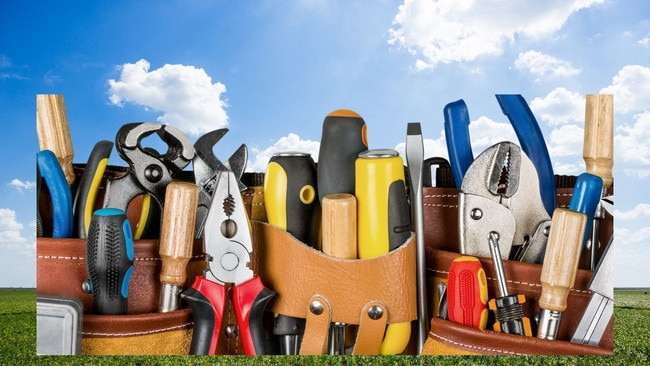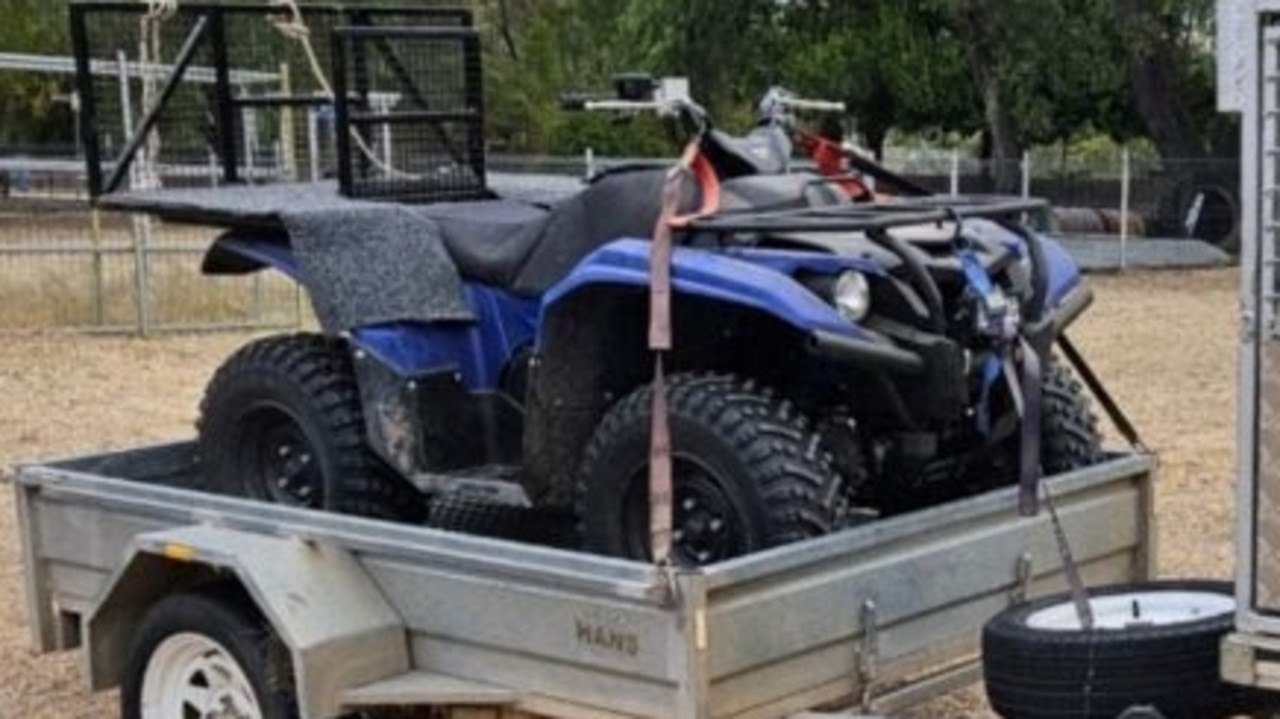Best tools for farm jobs: Cordless drill, chainsaw, wire cutters
These 10 tools are essential for running a profitable and successful farming operation. Our guide tells you how to best use them – and brands, sizes and prices.
A good tradie never blames their tools, but a tradie without the right tools might find it hard to be good. Here’s a rundown of 10 tools that will make the job of running a farm much easier.
WIRE STRAINER
Perhaps the most common and simplest fencing tool is the chain wire strainer, invented by New Zealand engineer EE Hayes more than 100 years ago. The Hayes brand is still sold, as are other designs. Well-built farm fencing lasts for decades but requires regular maintenance. Wires break through many causes requiring repair, while end (strainer) assemblies need periodic restraining. A set of fence strainers gets a good workout over the years.
WIRE CUTTERS
A good pair of specialised wire cutters about the size of a pair of pliers costs about $75, but they are worth every cent. Such a pair will last decades and make the constant cutting of wire required during fencing work a pleasure.
WIRE SPINNER
A device to hold a roll of plain fencing wire so it can be run out without becoming hopelessly tangled. Also useful to roll wire up tidily when dismantling a fence. Even if a single roll of wire (commonly 1500m long) lasts for years, a wire spinner is a worthwhile investment. Other fencing tools such as fencing pliers and strainer clamps for erecting pre-fabricated mesh fencing are useful if fencing is a major preoccupation, but strainers, a spinner and wire cutters are the main requirements for maintenance and the occasional installation.
CHAINSAW
Chainsaws are essential if you want to avoid routinely calling for help or spending hours with a hand saw cutting fallen branches and firewood. Firewood can be had for next to no cost if a chainsaw is available to cut fallen or found timber (subject to state and local government regulations). They are also handy for larger pruning jobs. Inexperienced users should attend a training course on using a chainsaw, if possible before buying one. Courses are often available through TAFE colleges or adult learning programs.

CORDLESS DRILL
This is probably the first cordless tool most of us buy. Both a drill and a power screw and bolt driver, its basic features include a reversible, dual-speed motor and an adjustable clutch to prevent over-driving screws. While a ⅜ inch or 10mm chuck size is common, a larger ½ inch or 12mm chuck is preferable. More powerful models may include a “hammer” setting for drilling holes in masonry.
IMPACT DRIVER
Impact drivers have a hexagonal socket in place of a chuck. Rather than imparting forward pulses to the drill bit (hammering), impact drivers impart a force perpendicular to the drill bit – a rotational impact. The impact mechanism kicks in automatically as the tool encounters more force. Impact drivers can be used to drill holes (expensive drill bits with hexagonal shanks are used), but their main use is to drive in longer bolts and screws. They are excellent at removing stubborn screws without stripping or damaging the head.
SABRE SAW
A sabre saw will come in handy in tight spaces. A powered hand-held reciprocating blade, a sabre saw blade can cut most materials. They come into their own when the cut can only be made from one direction and there is no room to follow through using a circular saw, a panel saw for wood or a hacksaw for metal. Blades are flexible, allowing cuts to be made close to immovable objects.
ANGLE GRINDER
An angle grinder has many uses in metal working, removing troublesome bolts, preparing metal surfaces for paint, as a sander for rough removal before switching to orbital sanders for finishing and buffing metal and wood. Larger sizes driving discs up to 230mm diameter require mains power, while cordless units will drive discs up to 125mm.
AIR COMPRESSOR
On a farm with a tractor (or two), a ride-on mower, a builder’s wheelbarrow, several trailers and some rubber-tyred tractor-drawn implements, rarely more than a month or two will go by without a flat tyre showing up. A leaking tractor tyre might mean a house call from a tyre specialist costing several hundred dollars and it may still have a slow leak. It is simpler to add air every few months. A relatively small air compressor and a good-quality pressure gauge attachment will let you pump up everything.
SOCKETS AND SPANNERS
Often the smart thing is to put off a purchase until a clear need emerges, however this approach doesn’t work with these essential workshop helpers. If you don’t have the right spanner or socket on hand, chances are you will reach for that trusty shifter, struggle to get it into a tight spot, round off the bolt head and skin your knuckles. Better to bite the bullet and buy a good set of sockets and spanners, the latter a combination ring and open-ended type. A selection with both AF (“across flat”, an imperial measure) and metric spanners and sockets ranging from ⅜ inch to 1-¼ inch AF and 8mm to 32mm metric will cover most requirements.
The advice in this guide comes from The Weekly Times Farmers Handbook – a bible of farming and authority on farming issues. Since 1934, the handbook has been helping farmers with vital information, all of it garnered from the pages of the newspaper itself.




